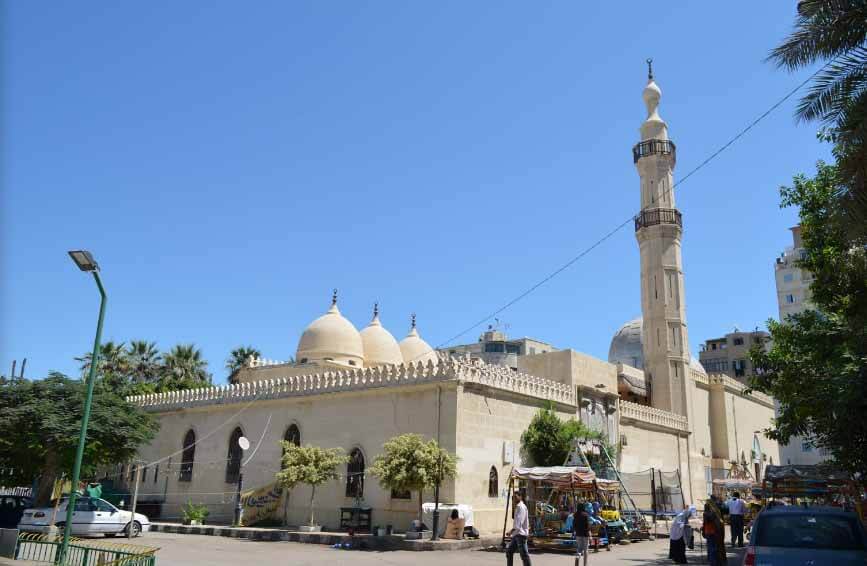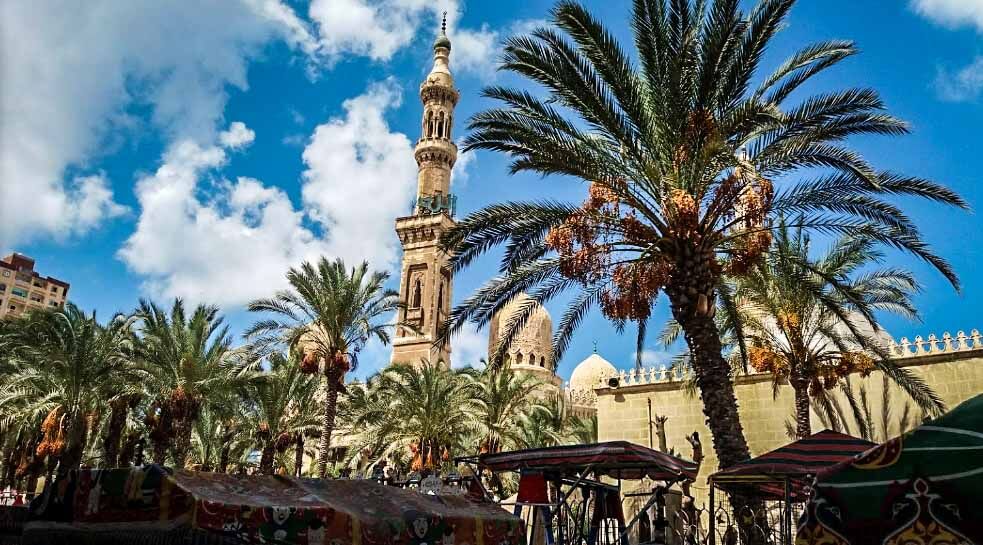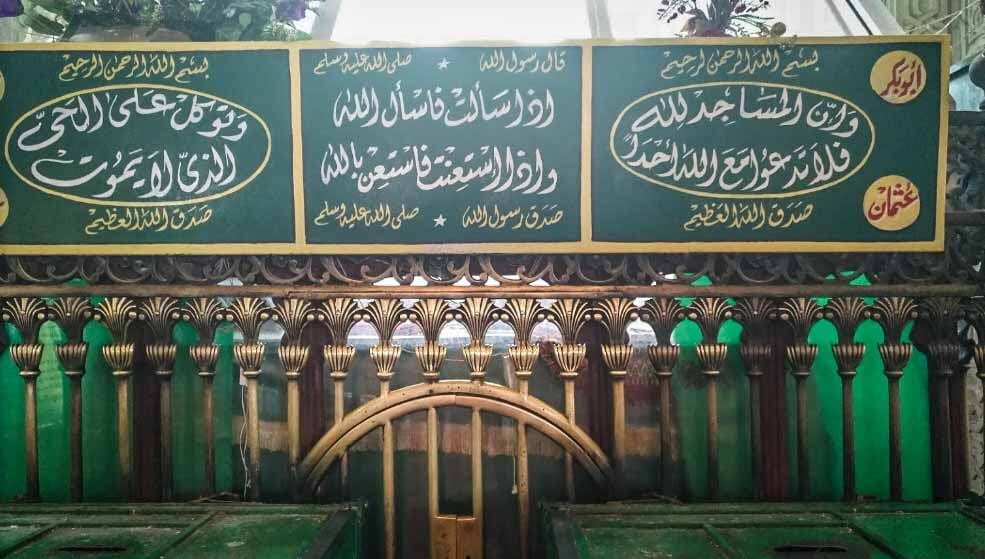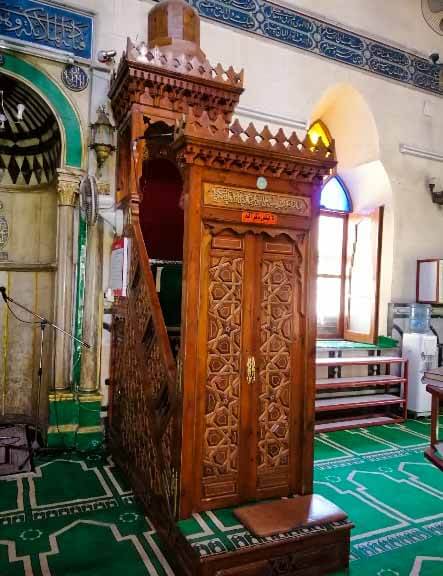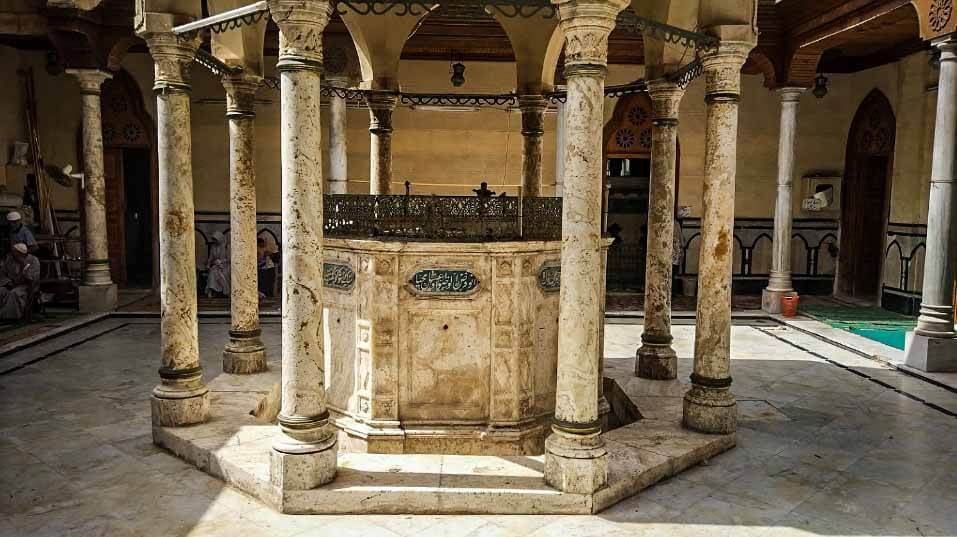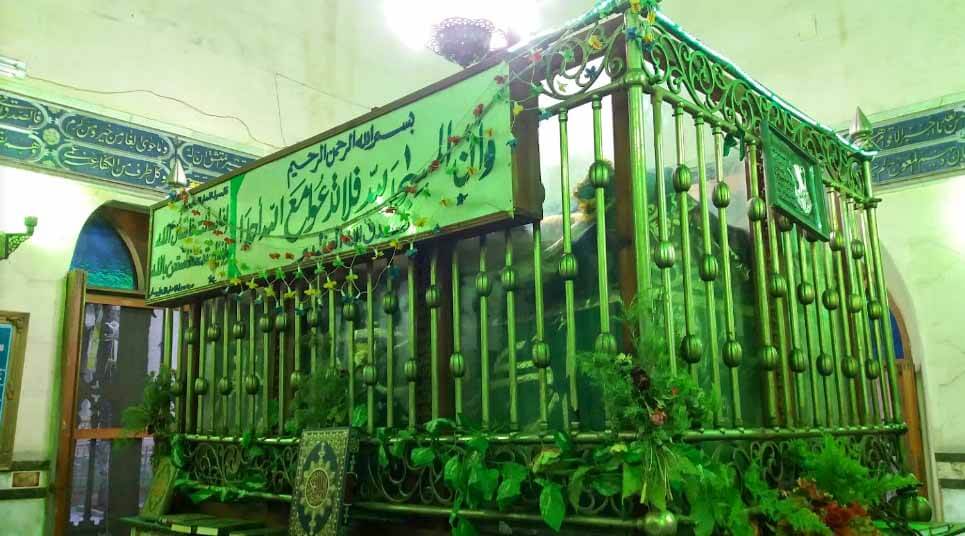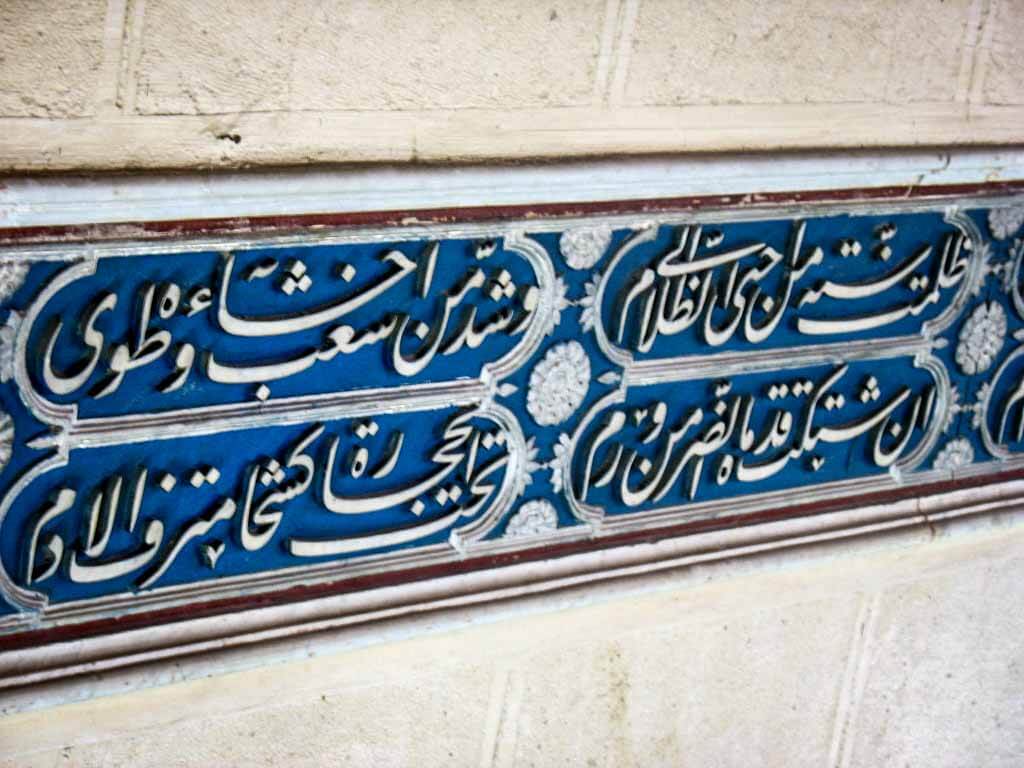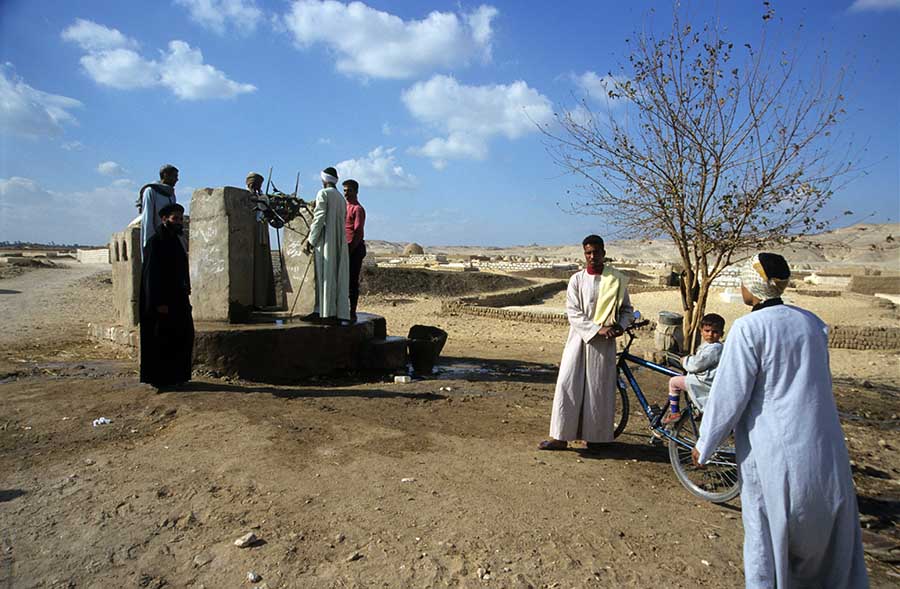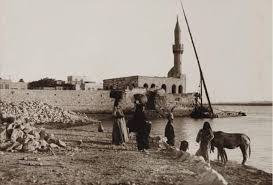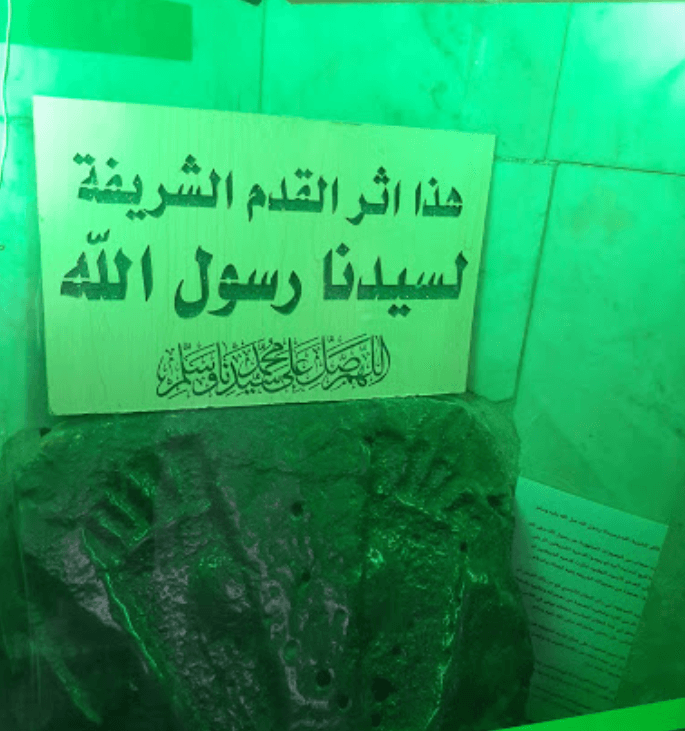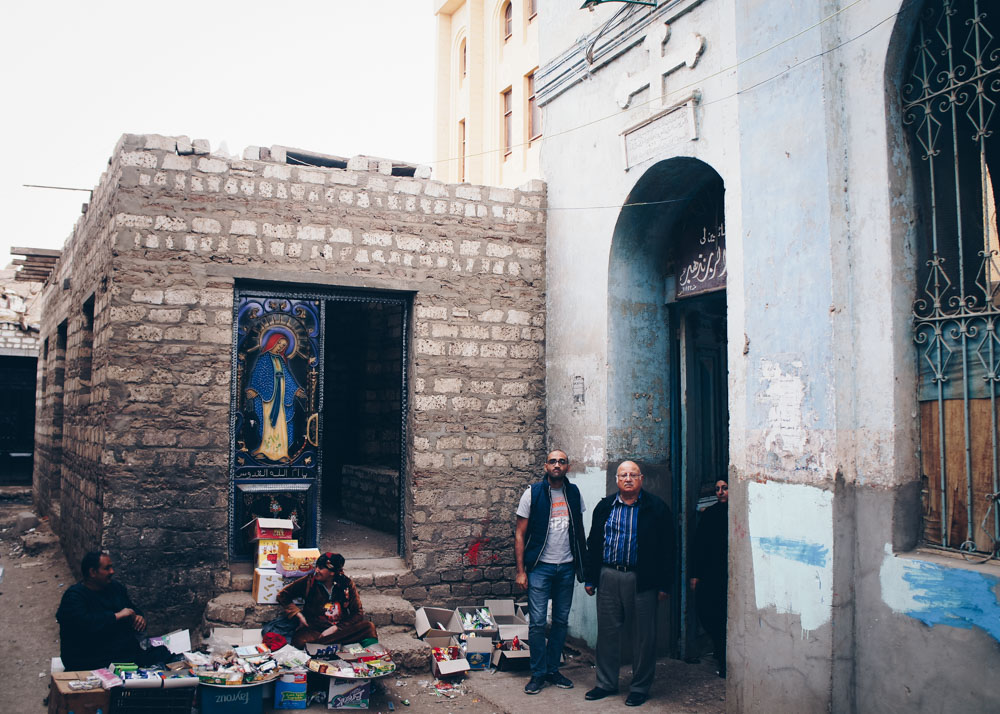Alexandria, Egypt
Coordinates: 31.205749, 29.882949
Sayyidina al-Busiri رحمة الله عليه was a Sanhaji Berber Muslim poet belonging to the Shadhiliyya order, being direct disciple of Sheikh Abul Abbas al-Mursi رحمة الله عليه.
His magnum opus, the Qasida Burda, in praise of the Prophet Muhammad ﷺ, is one of the most popular poems in the world.
Al-Maqrizi mentions that his family hailed from the Hammad citadel in Morocco and that they were of the Banu Habnun tribe.
Qasida al-Burda Sharif
He lived in Egypt, where he wrote under the patronage of Ibn Hinna, the vizier.
The most famous of these is the Qasida al-Burda (Poem of the Mantle). It is entirely in praise of the last and true prophet of Allah, Hz. Prophet Muhammad ﷺ, who cured the poet of paralysis by appearing to him in a dream and wrapping him in a mantle.
The poem has had a unique history.
Even in the poet’s lifetime it was regarded as sacred. Up to the present time its verses are used as amulets; it is employed in the lamentations for the dead; it has been frequently edited and made the basis for other poems, and new poems have been made by interpolating four or six lines after each line of the original.
It has been published with English translation by Faizullabhai (Bombay, 1893), with French translation by René Basset (Paris, 1894), with German translation by C. A. Ralfs (Vienna, 1860), and in other languages elsewhere.
The legend goes that his inspiration for composing the Burda came after a sudden and painful paralysis. The physicians failed to come up with a diagnosis or cure him. He felt that his last hope of regaining his health was in writing a laudatory poem of the Prophet ﷺ, with the confidence that it would intercede on his behalf.
The Burda had made such impression on the vizier of Egypt that he succeeded in purchasing the Prophetic relics from the Bani Ibraheem tribe in the city of Yanboo’ and put them on display along the Nile River bank in a shrine that that is now known as “Athar al-Nabawy” (Prophetic Relics).
Both Sayyidina al-Busiri رحمة الله عليه and Hz. Ibn A’tta Allah al-Iskandary رحمة الله عليه were disciples of Hz. Abu al-Abbas al-Mursi رحمة الله عليه.
Through the grace of al-Mursi, Hz. al-Busiri’s رحمة الله عليه talent for poetry flourished and reached a peak whilst the presence of Hz. al-Mursi رحمة الله عليه inspired Hz. Ibn Atta-Allah رحمة الله عليه to explore and reach the summits of prose.
Hz. al-Busiri رحمة الله عليه who was known to be very loyal towards his teacher would recite poetry as a way to ventilate what is inside him. He only later becomes known as a pious Sufi ever praising the Prophet of Allah ﷺ in his poem that demonstrated his perfected and sincere love for Allah and His Messenger ﷺ.
Sidi Abu El Abbas El Morsi Mosque
He is Buried in Sidi Abu El Abbas El Morsi Mosque in Alexandria, Egypt.
This mosque is highly regarded for its historical value. The mosque is of medium size, having a nice & comfortable prayer hall, with a separate room containing the tomb inside.
The toilets & ablution areas are well-managed, and it also has a beautiful small courtyard outside.
This mosque is not open all the time, so it is best for you to come near the prayer times. Worth the visit if you’re in Alexandria.



